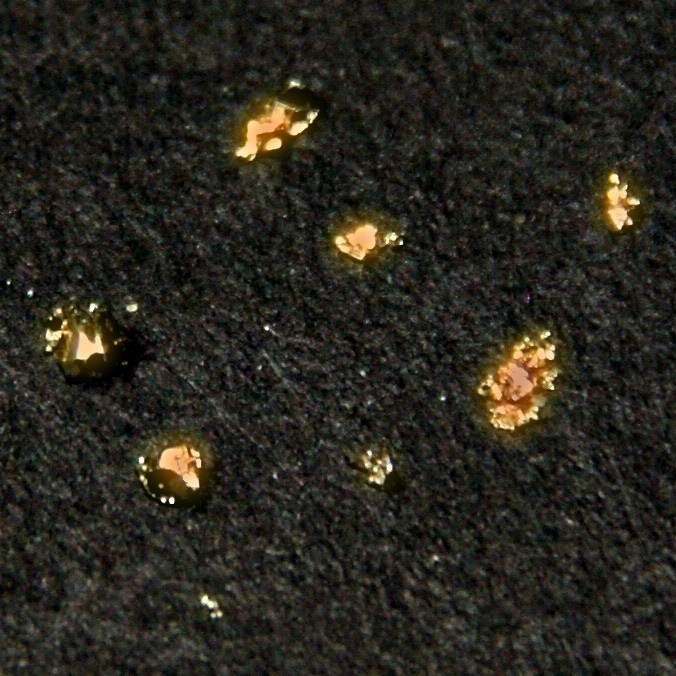Californium
98
Cf
Gruppe
n/a
Periode
7
Block
f
Protonen
Elektronen
Neutronen
98
98
153
Generelle Eigenschaften
Ordnungszahl
98
Atommasse
[251]
Massenzahl
251
Kategorie
Actinoide
Farbe
n/a
Radioaktiv
Ja
Named after California and the University of California
Kristallstruktur
Einfach hexagonal
Geschichte
Californium was discovered by Stanley G. Thompson, Kenneth Street, Jr., Albert Ghiorso and Glenn T. Seaborg in 1950 at the University of California, Berkeley.
It was produced by the bombardment of curium with alpha particles.
Californium was isolated in macro quantities for the first time by Burris Cunningham and Stanley Thompson in 1958.
It was produced by the bombardment of curium with alpha particles.
Californium was isolated in macro quantities for the first time by Burris Cunningham and Stanley Thompson in 1958.
Elektronen pro Schale
2, 8, 18, 32, 28, 8, 2
Elektronenkonfiguration
[Rn] 5f10 7s2
Californium is produced in nuclear reactors and particle accelerators
Physikalische Eigenschaften
Aggregatzustand
Fest
Dichte
15,1 g/cm3
Schmelzpunkt
1173,15 K | 900 °C | 1652 °F
Siedepunkt
-
Schmelzwärme
n/a
Verdampfungswärme
n/a
Spezifische Wärmekapazität
-
Häufigkeit in der Erdkruste
n/a
Häufigkeit im Universum
n/a

CAS-Nummer
7440-71-3
PubChem CID-Nummer
n/a
Atomeigenschaften
Atomradius
-
Kovalenter Radius
-
Elektronegativität
1,3 (Pauling-Skala)
Ionisierungsenergie
6,2817 eV
Molares Volumen
18,4 cm3/mol
Wärmeleitfähigkeit
0,1 W/cm·K
Oxidationszustände
2, 3, 4
Anwendung
Californium is used as a portable neutron source for discovery of metals such as gold or silver by on-the-spot activation analysis.
Neutrons from californium are employed as a treatment of certain cervical and brain cancers where other radiation therapy is ineffective.
Neutron moisture gauges use californium-252 to find water and petroleum layers in oil wells.
Neutrons from californium are employed as a treatment of certain cervical and brain cancers where other radiation therapy is ineffective.
Neutron moisture gauges use californium-252 to find water and petroleum layers in oil wells.
Californium is harmful due to its radioactivity
Isotope
Stabile Isotope
-Instabile Isotope
237Cf, 238Cf, 239Cf, 240Cf, 241Cf, 242Cf, 243Cf, 244Cf, 245Cf, 246Cf, 247Cf, 248Cf, 249Cf, 250Cf, 251Cf, 252Cf, 253Cf, 254Cf, 255Cf, 256Cf